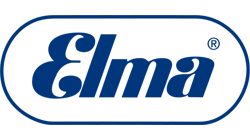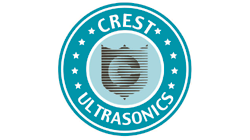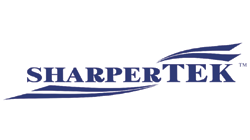Answers to FAQs about Ultrasonic Cleaning
If you’re thinking about purchasing an ultrasonic cleaner for the first time you probably have some questions about the technology and best practices for use. The following is a list of commonly asked questions followed the answers:
When should I use an ultrasonic cleaner?
Ultrasonic cleaners are unsurpassed when it comes to removing contaminants from virtually any hard surface that can be safely immersed in a water-based (aqueous) cleaning solution. The challenge is selecting the correct ultrasonic cleaner; its accessories, cleaning solution formulations, and cleaning procedures to accomplish tasks in the most efficient manner.
How does the process work?
Ultrasonic cleaners are fitted with transducers attached to the bottom of a tank filled with the cleaning solution. Transducers create vibrations at high frequencies measured in thousands of cycles per second (kHz) and send sound waves through the cleaning solution. These waves produce millions of tiny vacuum-filled bubbles that shoot out a powerful jet of liquid when they implode. The force of the implosions, called cavitation action, lifts contaminants off objects being cleaned. The process is tough enough for carburetors but gentle enough for electronics and surgical instruments.
Where is ultrasonic cleaning applied?
While we use the term ultrasonic cleaner these devices do a lot more than clean parts, be they engine components, injection molds or surgical implants. For example, they are used to degas solvents, disperse nanoparticles, and emulsify, dissolve, disperse and otherwise prepare lab samples.
How do I select my ultrasonic cleaner?
If you are cleaning parts, to get started you need to consider the following before making a selection: (Scroll down for information on sample prep in the lab.)
- Type of contamination to be removed. There’s a big difference, as you can imagine, between removing coolant from machined parts, varnish deposits from a carburetor, ink from printing rolls, and blood and tissue residues from surgical instruments.
- The composition of products being cleaned. Different parameters apply to cleaning aircraft engine components and glass capillaries. You’ll need compatible cleaning solution and ultrasonic cleaning frequency.
- How will the parts be used after cleaning?
- How do you define ‘clean’?
- Will you be cleaning batches or individual parts?
- Component size and weight
Once you define exactly what you’re trying to accomplish the following points will help narrow down your equipment selection. Then it’s time to contact the scientists at iUltrasonic for specific recommendations.
How to select the proper size of an ultrasonic cleaner?
Measure the dimensions of largest parts to be cleaned and make sure to select a tank that will accommodate these parts. In addition, pay attention to the internal dimensions of the parts basket, since this is most likely where you will put the parts during cleaning. Questions about baskets are covered next.
You’ll also need to know the working depth of the cleaning fluid as it relates to the size of parts you’re cleaning. The working depth is the distance from the bottom of the basket to the surface of the liquid in a filled tank. It’s important because parts being cleaned must be fully immersed in the liquid.
Product specs for benchtop ultrasonic cleaners may not include this information. If they do not, feel free to contact the manufacturer or the scientists at iUltrasonic for this information.
Do I need a parts basket?
Absolutely (but with some exceptions*). Why? Baskets are used to support parts in an ultrasonic cleaner. They affect cleaning efficiency and the lifetime of the tank. Note that some equipment manufacturers may include baskets with the ultrasonic cleaning unit; others may offer them as options.
Baskets with insulated handles facilitate placing and removing parts being cleaned in hot liquid. They also keep parts off the tank bottom where they suppress vibration and lower cleaning effectiveness.
In terms of tank life, keep in mind that the bottom of the tank is a vibrating membrane. Any solid item, particularly a metal part, can act as a drill while the ultrasound is operating. Over time this can wear a hole in the tank. That’s a good enough reason to use baskets.
Some baskets hang on the tank rim; others are equipped with rubber- coated feet positioned near the corners of the tank bottom where there is minimal vibration. Fine mesh baskets for small parts can be positioned in beakers or standard baskets.
*Industrial-size ultrasonic cleaners may be equipped with bottom racks to support large products; others may be designed to accept products suspended in the cleaning solution.
Do the ultrasonic cleaner need a heater?
Most cleaning operations are much more effective with heating. A heated cleaning solution is best for removing oils, machining coolants and a whole host of other contaminants from just about any surface you can think of.
Although heat is a natural byproduct of ultrasonic cavitation, cleaning efficiency increases when you give it a boost by using ultrasonic cleaners with thermostat-controlled heaters. These can be adjusted in increments to 80⁰C above which cavitation is inhibited and cleaning efficiency levels off.
On the other hand if you are removing blood, don’t use heat at all.
What is a sweep mode?
Sweep mode is a small continuous variation of the ultrasonic frequency around a central value, such as 40 kHz ±3 kHz.
When an ultrasonic cleaner operates at a fixed frequency without Sweep there are three potential problems: ‘hot spots’, ‘dead zones’, and harmonic vibrations.
Hot spots are areas with a high concentration of cavitation bubbles, i.e. a stronger ultrasonic effect. If the ultrasonic cleaning is too intense this can cause etching on delicate parts with fine features, on polished surfaces, on soft metals, or on thin metal layers.
Dead zones are areas where there is no cavitation, i.e. no cleaning.
Harmonic vibration can develop when the fixed ultrasonic frequency causes parts to resonate. This is potentially damaging to sensitive components such as fine wires or crystals. Harmonic vibration is particularly undesirable when cleaning electronics and printed circuit boards. Always choose an ultrasonic cleaner with Sweep mode for electronics cleaning.
Select a unit with a Sweep mode if you are cleaning precision parts and surgical instruments where highly uniform cleaning is needed. It is less important when the results need not be perfect, such as degreasing carburetors and fuel injectors.
How to I select an ultrasonic frequency?
Most ultrasonic cleaners operate between 35 and 45 kHz. This frequency range is well suited to the vast majority of cleaning tasks.
A lower frequency such as 25 kHz produces larger cavitation bubbles. When these bubbles implode they release a stronger cleaning energy. For coarse cleaning such as removal of lapping abrasives or polishing paste, a lower frequency will be more effective.
Note that the lower the frequency, the louder the cleaning operation due to tank wall vibrations. Lids (which also reduce evaporation), sound-deadening enclosures and ear protection are ways to reduce annoying ultrasonic noise.
A higher frequency produces smaller cavitation bubbles. These cover fine featured complex surfaces more thoroughly and are gentler than low frequencies. For fine cleaning of very delicate jewelry, electronics, and soft metals with polished surfaces consider a unit operating at 80 - 130 kHz. If you are cleaning capillary tubes or spectrophotometer cuvettes you will need a unit that operates at 80 kHz or higher.
If you are cleaning a variety of materials consider dual-frequency ultrasonic cleaners available from iUltrasonic.
What is important about degas and pulse modes?
Every time you fill the tank with fresh cleaning solution you must degas the solution before the unit can clean effectively. Entrained or dissolved air inhibits cavitation, and cavitation is the mechanism that accomplishes the cleaning. A Degas mode will enable you start cleaning sooner after you fill the tank. It does the job by switching on and off causing air bubbles to coalesce and allowing them rise to the surface and burst.
Pulse mode provides intermittent spikes of very high ultrasonic power to remove stubborn contaminants. Pulse mode also degasses solutions very effectively.
If you are degassing solvents select a model that has either a Degas mode or a Pulse mode. An ultrasonic cleaner without these modes will also degas your solvents, but will do so at a slower rate. (See below on preparing lab samples.)
What is important about ultrasonic power?
‘When talking about power which model is stronger?’ sounds like a simple question but it’s not.
Some manufacturers report ultrasonic peak power, others report average power, and some report both. When an ultrasonic cleaner is running electrical power is consumed evenly but it is released in intervals to create sound waves. These intervals produce the wave shape of the ultrasonic signal.
Rather than put you to sleep with more on this topic, the important thing to keep in mind that while more power usually indicates faster and more effective cleaning, more power is not always better. Too much power can damage electronic parts, the surface finish on a soft metal (e.g. aluminum), and other delicate items. For cleaning extremely sensitive items, adjustable power is a useful feature.
And a caution: Don’t try to increase the effective power of an ultrasonic cleaner by under-filling the tank. Ultrasonic cleaner generators that power transducers are tuned to a particular fill level. Operating the unit with less fluid can damage the generator and will result in less than optimized cleaning.
What do I need for preparing lab samples?
Purchase a unit that has both Sweep and Normal (fixed frequency) modes. Trial and error will indicate which mode will best dissolve, disperse, homogenize, or mix your samples.
If you are disaggregating liposomes, select a unit with adjustable power since you will need to find the power level that disperses your samples without damaging them. If you are dispersing nanoparticles, select a unit with extremely high ultrasonic power.
Similarly, if you are working with difficult to dissolve samples, select a high power unit. Pulse mode, which produces intermittent power spikes, will also assist in dissolving challenging samples.
A variety of accessories are available to support the use of ultrasonic cleaners in the lab. Blending, dissolving and dispersing are facilitated when suspending samples in a water bath with a surfactant. Use Erlenmeyer flask holders, flask clamps, test tube holders or specially designed lids to hold beakers. If high bath temperatures are a concern a cooling coil attached to a cold water line serves as a heat exchanger to prevent the bath from heating up.
What liquid do I use in an ultrasonic cleaner?
If you’re using the ultrasonic cleaner to clean parts, you should use a cleaning solution specifically formulated for the job. Most formulations come as water-based concentrates; the concentrate should be diluted with quite a lot of water before use.
For example, Elma tec clean and Elma lab clean products are typically diluted with water down to 1-5% (in other words, after dilution they are 95-99% water). Different cleaning solutions are optimized for removing specific types of contaminants from a range of surfaces. Tell your expert dealer exactly what you’re cleaning, and they should be able to recommend the best cleaning solution.
Can you use tap water in an ultrasonic cleaner?
Yes, you should use tap water to dilute the cleaning concentrate. Using tap water alone without any additional chemicals or soap will significantly reduce the cleaning effectiveness. It would be like washing dishes without dish soap. If you want the parts to dry completely spot-free, you should rinse them with distilled or deionized water after washing.
Can you use water and dish soap in an ultrasonic cleaner?
Yes, you can wash parts with water and dish soap in an ultrasonic cleaner, but you will get faster and more thorough results with a cleaning solution formulated for ultrasonic cleaning. Avoid any solutions that foam. Ultrasonic cleaning solutions are always formulated to be non-foaming.
What is a good ultrasonic cleaning solution?
If you’re planning to clean lots of different types of items and want to choose one solution that will work for all of them, Elma tec clean A4 universal ultrasonic cleaning concentrate is an excellent choice. Elma tec clean A4 will remove oil, grease, combustion residue, soot, organic contamination, dust, and fingerprints from surfaces made of metal, glass, plastic, ceramics, and rubber. Dilute this solution to 1-5% with water before use.
Can you put isopropyl alcohol in an ultrasonic cleaner?
It is an explosion hazard to fill your ultrasonic cleaner with a flammable solvent such as isopropyl alcohol (IPA). Although you should never put IPA directly in the tank, you can mitigate the risk by using a secondary container. You can partially fill the tank with water and a bit of detergent, then position a glass beaker containing IPA in the water. The ultrasonic cleaning power will pass through the walls of the beaker into the IPA. Items to be cleaned should be placed inside the beaker which should be covered to minimize evaporation. The entire set-up should be inside a fume hood or other extremely well-ventilated location where the solvent vapor cannot accumulate.
What can be cleaned with an ultrasonic cleaner?
An ultrasonic cleaner can be used to clean most items that can safely be submerged in water. Cleaning is most effective on hard surfaces made of metal, glass, or plastic. Popular uses for ultrasonic cleaners include cleaning of carburetors, printed circuit boards, medical and dental instruments, jewelry, watch parts, machined metal parts, firearms, paint gun nozzles, fuel injectors, plastic injection molds, and 3D printed parts. Ultrasonic cleaners are used to clean newly manufactured items and to maintain equipment.





